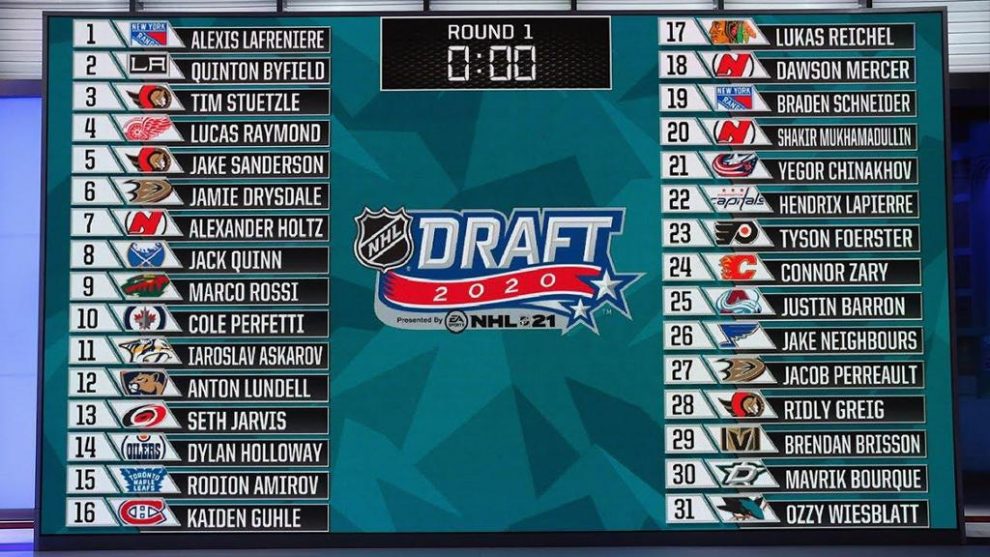
Introduction
The NHL Draft serves as the cornerstone for building a championship team in the National Hockey League (NHL). It is a highly anticipated event where teams have the opportunity to select young, talented players who will shape the future of their organizations. In this article, we will delve into the intricacies of the NHL Draft process, explore the strategies employed by teams, and highlight the importance of scouting and player development. Through the lens of pure American English, we will take an inside look at how teams construct their rosters through the NHL Draft.
I. The Road to the Draft: Scouting and Evaluation
- The Role of Scouts
Scouts play a vital role in the NHL Draft process. They scour the globe, evaluating prospects, and assessing their potential to excel at the professional level. They analyze players’ skills, hockey sense, physical attributes, and intangibles to determine their value and fit within a team’s system.
Hall of Fame coach Scotty Bowman emphasized the significance of scouting, stating, “Scouts are the backbone of any successful organization. Their ability to identify talent and project players’ development is instrumental in building a championship team.”
- Combining Traditional Scouting with Analytics
While traditional scouting remains essential, NHL teams have begun incorporating analytics into their evaluation process. Advanced statistics and data analysis provide teams with additional insights into player performance, strengths, weaknesses, and potential contributions to the team.
NHL executive and analytics advocate John Chayka noted, “Analytics provide another layer of information to aid in decision-making. When combined with traditional scouting, they can provide a more comprehensive evaluation of a player’s abilities.”
II. Draft Strategy: Building a Foundation
- Drafting for Positional Needs vs. Best Player Available
Teams face a strategic decision when it comes to selecting players in the draft: whether to prioritize filling positional needs or choosing the best player available. Some teams opt to address immediate needs, while others focus on acquiring the most talented player, regardless of position.
Former NHL general manager Lou Lamoriello highlighted the dilemma, stating, “It’s a delicate balance. You want to address positional needs, but you also can’t pass up on a special talent. It’s about finding the right fit for the team.”
- Trading Picks: Balancing the Present and Future
Another aspect of draft strategy involves trading draft picks. Teams may choose to trade picks to acquire established players who can contribute immediately, or they may stockpile picks to build for the future. Finding the right balance between short-term success and long-term sustainability is crucial.
Three-time Stanley Cup-winning coach Joel Quenneville acknowledged the importance of draft pick management, saying, “Trading draft picks is a strategic decision. It requires careful consideration of the team’s current state and long-term goals.”
III. Player Development: Nurturing the Next Generation
- The Role of AHL and Junior Leagues
After being drafted, players typically spend time developing their skills in the American Hockey League (AHL) or junior leagues. These leagues provide opportunities for young players to gain experience, refine their game, and prepare for the intensity of the NHL.
NHL All-Star defenseman Drew Doughty discussed the impact of the AHL on player development, stating, “The AHL is a crucial step in a player’s journey to the NHL. It allows you to adapt to the professional game and refine your skills against top-level competition.”
- Coaching and Mentorship
Coaching and mentorship are vital components of player development. NHL teams invest in experienced coaches and mentors who can guide young players, help them refine their skills, and navigate the challenges of professional hockey.
Hall of Fame coach Pat Burns emphasized the significance of coaching, saying, “Coaches play a pivotal role in developing young players. They provide guidance, instill confidence, and help players reach their full potential.”
Conclusion
The NHL Draft is a pivotal event that lays the foundation for building a championship team. Through a combination of scouting, analytics, strategic decision-making, and player development, teams aim to select and cultivate talented prospects who will contribute to their long-term success. The draft process is a delicate balance of addressing positional needs, assessing player value, and making trades to balance short-term goals with future sustainability. By understanding the intricacies of the NHL Draft, fans can appreciate the complexity of team-building and the significance of this annual event in shaping the league’s future.











